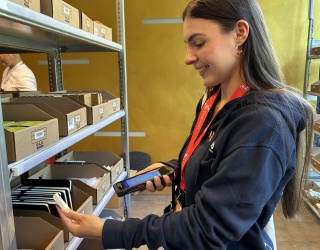IRI’s latest insights on food inflation and impact on consumer shopping behavior illustrate relief consumers are finding in perimeter categories.

Information Resources, Inc. (IRI®), which recently merged with The NPD Group to create a leading global technology, analytics and data provider, has released a new report, September 2022 Price Check: Tracking Retail Food and Beverage Inflation, with insights regarding food inflation and its impact on consumer shopping behavior. The report leverages point-of-sale data for September 2022 and includes data across U.S. food channels, including grocery, drug, mass market, military commissaries, select club and dollar stores as well as e-commerce.
Price inflation is slowing down for the first time this year
The latest data shows that food and beverage prices in September 2022 increased by 1.0% compared to August. While food and beverage prices remain significantly elevated — about 13.3% higher year-over-year through the five weeks ending Oct. 2, 2022 — overall year-over-year inflation was steady from August to September, showing a moderating trend after months of steady increases. The moderating effect is being driven by year-over-year price deflation in store perimeter categories (such as produce and deli), whereas prices in center-store categories, including snacks and frozen meals, continue to rise.
“September data revealed some welcome news for consumers: Price inflation is slowing down for the first time this year in the perimeter categories that account for nearly $200 billion in annual retail sales,” said Krishnakumar (KK) Davey, president of Thought Leadership for CPG and Retail, IRI and NPD. “However, overall grocery bills are still significantly higher than this time last year, causing shoppers to shift their purchase habits. IRI is continuing to track food and beverage price inflation carefully to ensure that manufacturers and retailers are able to respond to shifts in consumer behavior and execute price, promotion and supply chain strategies that help them drive growth in this dynamic economic environment.”
Key insights from the September 2022 report include:
- September inflation inched up. At-home food and beverage inflation for September 2022 increased 1.0% compared to August.
- Overall year-over-year price inflation is plateauing. Overall food and beverage pricing remained just over 13% higher in September compared to the year-ago period, in line with August and just slightly above July year ago-levels. The flattening of this curve is a welcome change following the consistent, significant, year-over-year price increases the U.S. has experienced every month from January to July 2022.
- Perimeter categories offer some relief. Prices in perimeter categories were 9.6% higher in September compared to the year-ago period; however, year-over-year inflation in these categories has declined every month since February.
- Inflation varies significantly across the store. For the five weeks ending Oct. 2, 2022, prices in the alcohol segment were up 4.2% compared to the year-ago period, while dairy (up 19.6%) and frozen meals and other frozen foods (up 18.4%) were up dramatically higher.
- Consumers are using various strategies to cope:
- Reduced consumption. Volume data shows many consumers are tightening their belts and forgoing purchases in categories that have seen significant price increases. For example, sales volumes in the deli service lunchmeat, fresh finfish, frozen dinners and shelf-stable dinners categories each declined over 10% in September.
- More quick trips. Quick trips continue to grow the fastest of all trip types over the last 12 weeks, up 5.7% compared to the year-ago period. Quick-trip behavior signals that consumers are “cherry picking” purchases of items at different stores to take advantage of the best deals.
- Shift to larger pack sizes. Consumers are buying larger pack sizes to get better value on a per-unit or volume basis.
- Manufacturers are pulling price-pack levers. To help balance affordability for consumers and rising input costs, food manufacturers are leveraging creative price-pack architecture to keep unit costs lower. Brands across the shampoo, ice cream, dog food and peanut butter categories have been experimenting with “shrinkflation,” developing smaller pack sizes to keep unit costs steadier even as input costs rise.
The full report can be found here.









